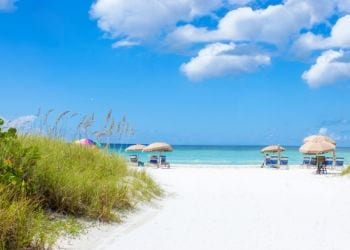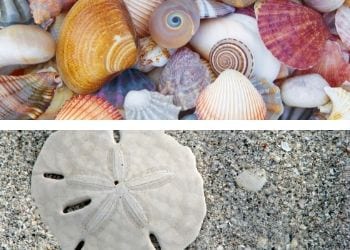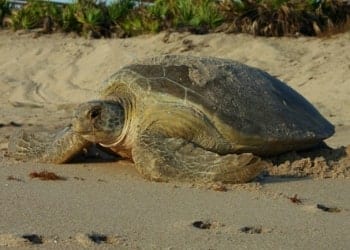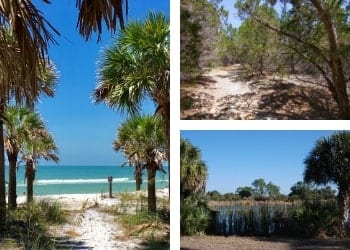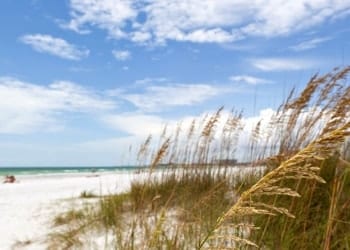Watch a sea turtle make its way back to the Gulf of Mexico
Video Courtesy of Sarasota Magazine
Sea turtles nest every year in Sarasota County from May through October.
By: Beth Luberecki
If you head to Sarasota County’s beaches this time of year, you might find you’re not the only one settling in on the sand—and that you have company of the non-human kind.
That’s because May 1 through October 31 is sea turtle nesting season in these parts. During the first half of the season, female sea turtles come on shore to build their nests and lay their eggs. Beginning typically in July, the baby sea turtles start hatching and embark on their journey back into the Gulf of Mexico.
According to numbers from Mote Marine Laboratory & Aquarium in Sarasota, there were 4,424 loggerhead turtle nests and 79 green turtle nests in the area stretching from Longboat Key down to Venice in 2017. That was just a bit shy of 2016’s record-breaking year.
Sea turtles’ local success depends on everyone doing their part to make nesting and hatching go as smoothly as possible. For visitors, that means following some simple dos and don’ts when you’re at the beach or staying at a beachfront rental or hotel.
When setting up your chairs and umbrellas on the sand, steer clear of active turtle nesting sites, which are marked by wooden stakes and yellow caution tape. If you happen to get lucky enough to see a female nesting or some newborns hatching, observe from afar.
“[Sea turtles] are a protected species, so it’s illegal to interact with them in any way,” says Melissa Bernhard, senior biologist with Mote’s sea turtle conservation and research program. “Adults in the nesting process can be scared away very easily, so it’s best to keep your distance.”
We know you’ll want to snap some pictures to remember the sighting. Just don’t use your flash because it can scare or disorient the turtles.
When your beach day is over, make sure to remove furniture, toys, and other items from the beach and clean up your trash. Fill in any holes you dug and knock down any sandcastles you built, as these can be unexpected obstacles for the turtles.
Keeping beaches dark at night is especially important, as hatchlings find the water by heading toward the brightest direction, which is ideally the open night sky over the water. So don’t use flashlights or fishing lamps on the beach at night, turn off outdoor lights if you’re staying at a beachfront property, and close your drapes or blinds in the evening to block light coming from indoors.
“When there are lights on or near the beach, it can override turtles’ natural instincts,” says Bernhard. “They end up crawling directly toward the light, which can waste their energy or lead them into dangerous situations. We want them to get to the water as quickly as possible.”
And don’t forget about your cell phone if you’re using it on the beach at night, says Carol Leonard, a member of the board of directors for the Coastal Wildlife Club, which monitors sea turtle nesting beaches from Caspersen Beach in Venice south along Manasota Key to Stump Pass Beach State Park in Englewood. She recommends setting your cell phone backlighting to either “off” or the dimmest setting plus shielding the screen with your hand if you’re pulling it out after dark.























